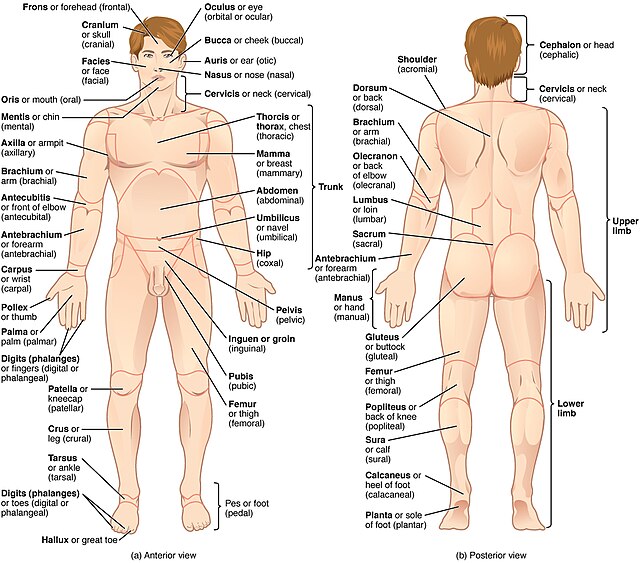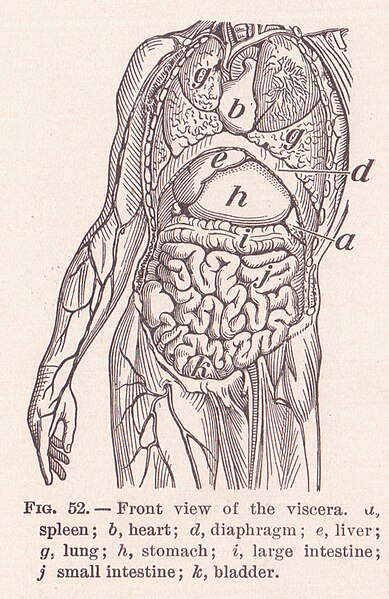Anatomical terminology is a form of scientific terminology used by anatomists, zoologists, and health professionals such as doctors, physicians, and pharmacists.
The human body is shown in anatomical position in an anterior view and a posterior view. The regions of the body are labeled in boldface.
Abdominal regions are used for example to localize pain.
The three anatomical planes of the body: the sagittal, transverse (or horizontal), frontal planes
The biceps brachii flex the lower arm. The brachioradialis, in the forearm, and brachialis, located deep to the biceps in the upper arm, are both synergists that aid in this motion.
In a multicellular organism, an organ is a collection of tissues joined in a structural unit to serve a common function. In the hierarchy of life, an organ lies between tissue and an organ system. Tissues are formed from same type cells to act together in a function. Tissues of different types combine to form an organ which has a specific function. The intestinal wall for example is formed by epithelial tissue and smooth muscle tissue. Two or more organs working together in the execution of a specific body function form an organ system, also called a biological system or body system.
The liver and gallbladder of a sheep
Relationship of major animal lineages with indication of how long ago these animals shared a common ancestor. On the left, important organs are shown, which allows us to determine how long ago these may have evolved.
Strobilus of Equisetum telmateia
Human viscera








